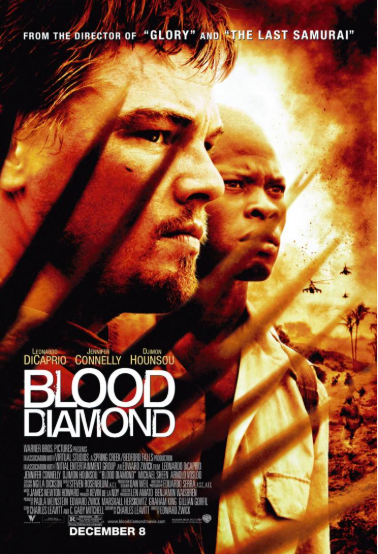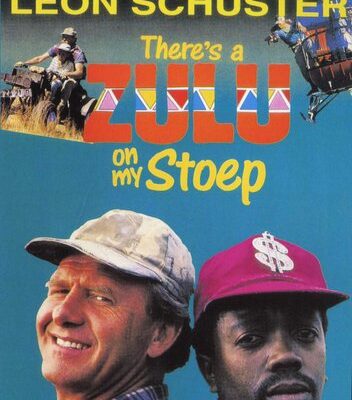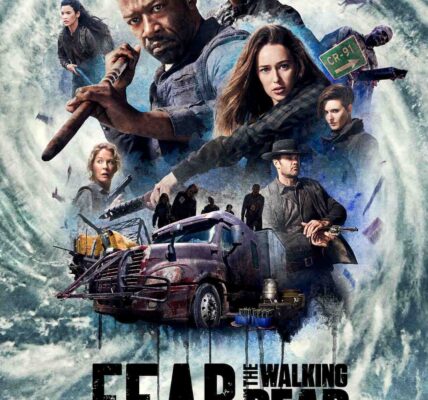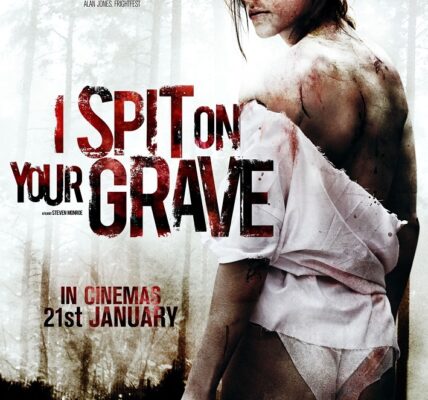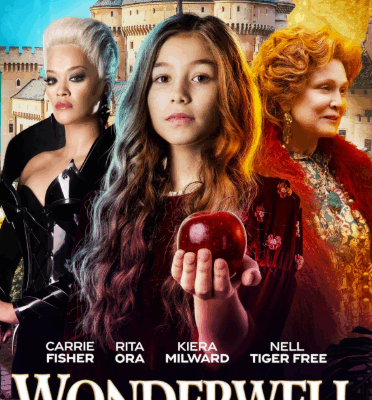1. Plot Summary (Concise)
Set during the Sierra Leone Civil War in the late 1990s, Blood Diamond weaves together three main viewpoints. Solomon Vandy (Djimon Hounsou), a Mende fisherman, is separated from his family and forced by rebel militias to dig for conflict diamonds. Danny Archer (Leonardo DiCaprio), a South African mercenary and smuggler, learns of Solomon’s discovery of an enormous pink diamond and schemes to get it. Meanwhile, Maddy Bowen (Jennifer Connelly), an American journalist, is investigating and exposing the trade in conflict diamonds. The three cross paths as they try to retrieve the diamond, reunite families, and expose injustice, all while navigating danger, betrayal, and moral compromise.
2. Notable Elements (Scenes, Performances, Cinematography)
- Standout performances: DiCaprio is intense as Archer—charismatic, ruthless but vulnerable. Hounsou is deeply affecting as Solomon; his despair, hope, and dignity anchor the emotional core. Connelly’s Maddy is compelling, offering the external moral lens.
- Powerful scenes: The moments where Solomon watches his village attacked, or being torn from family, are haunting. The scene near the end where the diamond is polished and revealed is both beautiful and bitter, symbolizing beauty born of suffering.
- Cinematography & location work: The film captures the brutal landscapes of Sierra Leone—muddy fields, war-torn villages, rebel camps—in a way that reminds viewers this is grounded in real suffering. The contrast between the glinting diamond mines and the devastation around them is visually arresting.
- Action & suspense: There are chase sequences, firefights, daring escapes, and betrayals. Though not purely an action movie, it incorporates tension and physical danger well.
- Moral complexity: The film resists simple black/white; characters are flawed. Archer’s arc—greed, transformation, sacrifice—is layered.
As for weaknesses: some critics note that at times the film veers toward melodrama or feels heavy-handed in its messaging. Some secondary characters are less developed, and certain plot turns (e.g. betrayals) feel familiar to war/drama formulas.
3. Themes and Messages
- Conflict / “blood diamonds” and exploitation: The central theme is how diamond mining funds war, suffering, and atrocities. The idea that something so coveted can be the source of great pain is tragic.
- Morality, complicity & redemption: Archer, Solomon, and even consumers far away are all entangled in moral compromise. Redemption is possible but costly.
- Family, loss, and identity: Solomon’s mission is driven by his family. The trauma of losing one’s home, the longing to return, and the damage of war on identity are core to the story.
- Power, corruption, inequality: The film illustrates how powerful entities (governments, militias, multinational interests) exploit weak people and resources.
- Truth, narrative & responsibility: Maddy’s journalism thread raises questions: can storytelling bring change? Who tells whose story? What moral responsibility do outsiders bear?
Relating to holiday sentiments: Blood Diamond is not a holiday or festive movie; its tone is serious, dark, and politically charged. However, themes like sacrifice, protecting family, and confronting injustice resonate sensitively with the idea of goodwill or moral reflection often present during holidays.
4. Personal Impressions
Strengths I love:
- The emotional impact is strong—the film sticks with you. The tragedy and human cost feel real, not just cinematic.
- The transformation of Archer is satisfying: from ruthless opportunist to someone willing to make sacrifices.
- The visuals and tone balance spectacle and grit. You see beauty (the diamond, landscapes) and horror (war, suffering) side by side.
- The film treats its characters seriously; it doesn’t exploit victims, but gives voices and dignity.
Limitations / what I disliked:
- Sometimes the narrative is a bit predictable in war-drama tropes: betrayals, last-minute rescues, etc.
- Some secondary characters (rebels, militia leaders) are less fleshed out. Their motives are simpler.
- A few scenes feel like they were inserted to push the social message rather than organically from character action.
5. Audience Recommendations
You should watch Blood Diamond if you:
- Appreciate films with strong moral, political, or social messages—especially about resource conflict, human rights, and war.
- Like dramas that mix action, emotion, and real-world stakes rather than pure escapism.
- Want to see powerful performances, especially from DiCaprio and Hounsou.
- Enjoy films that make you think, that leave questions behind, not just entertain.
It may be less appealing to you if:
- You prefer light, feel-good films or films that avoid sadness or moral weight.
- You don’t like war scenes, violence, or stories of suffering.
- You want tight, twisty plots rather than emotional, thematic films.
6. Conclusion & Rating
Blood Diamond is a compelling, morally urgent, and powerful cinematic work. It transcends the “adventure drama” genre by combining spectacle with serious commentary. It doesn’t always get everything perfect (some familiar tropes, minor character thinness), but its emotional depth, performances, and message make it a film worth watching and revisiting.
Final Recommendation: A must for thoughtful viewers who want their entertainment paired with meaning and real-world reflection.
Star Rating: ★★★★☆ (4.5 / 5)
Watch more:
